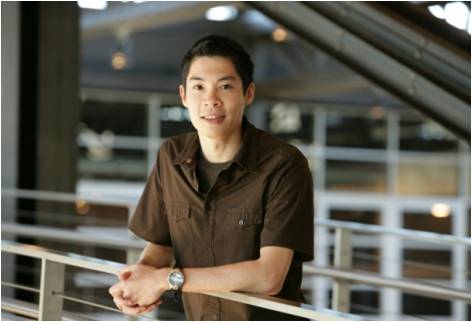Chris Chua's journey as an animator began when he first saw Pinocchio as a kid. His love of drawing and animation eventually led to his enrollment at CalArts where he studied 4 years of classical 2D animation.
After graduating, he was hired at Dreamworks as a rough inbetweener for Sinbad and then progressed as a background crowd animator on Shark Tale. He was promoted to full time animator on Flushed Away. He started working at Pixar in 2007 and has since worked on Wall-E, Up, Cars 2, Brave and several Cars toon shorts. He is currently working on Monsters University. It is my pleasure to introduce Chris Chua who has agreed to share a little bit about what he loves about animation and how he got where he is today.
 WDFM: Did you draw/doodle as a kid?
WDFM: Did you draw/doodle as a kid?Absolutely. I remember drawing and doodling constantly as a young kid. Between watching cartoons and movies, I would hunker down in front of a pad of paper and let my imagination run wild in the form of sketches, character doodles, and comic strips of my own creation.
Did you know from an early age that you wanted to pursue a career in the arts?
I knew from an early age that I loved movies and I loved to draw but I never seriously considered it as a career choice until I grew older and got into high school. I eventually came to realize that a career in animation combined my love and passion for art, drawing, design, and filmmaking all in one!
When did you decide to study animation?
I decided I wanted to study animation as my final years of high school were coming to a close. I realized that going to CalArts to get a bachelor’s degree in classical, hand-drawn animation was possible so I made it a point to apply and was finally accepted to attend in the fall of 1998.
What were the steps you took to get the education you needed for your career in animation?
Once I was accepted into CalArts’ character animation program, I worked very hard each year to learn as much as I could by taking classes in character design, life drawing and storyboarding, all of which helped me craft a short film each year.
What internships or volunteer positions did you pursue in animation or art?
Shortly after completing my sophomore year at CalArts, I had the lucky opportunity to learn computer animation at Rhythm and Hues for an entire summer. The following year, I got a chance to work as a Character Layout artist on Futurama at Rough Draft studios in Glendale. Both of these opportunities only lasted several months but they taught me the value of prioritizing my time and the demanding schedules of film and television production.
How did you get your first job in animation?
After finishing my final year at CalArts, I was fortunate to get hired on at Dreamworks as a rough inbetweener on Sinbad based on the short films I had done at school. Eventually, Dreamworks transitioned to making computer animated films and I got a chance to work as an assistant animator on Sharktale and finally a full-fledged animator on Flushed Away.
What is your favorite part of being an animator?
My favorite part of being an animator is looking for fresh, specific acting choices and imbuing that to whatever it is I’m animating. Digging deep, searching for a truth to a performance, and having the audience buy into a character’s actions is very rewarding to me.
What is your favorite Walt Disney quote?
“Its kind of fun to do the impossible,” is my favorite Walt Disney quote because it says so much about his philosophy, not only for his films, but in everything he did. With every creative endeavor, Walt saw budgetary constraints, story problems and technical limitations as a crucible to make his products better. Everything else took a back seat to telling a story in the most compelling and entertaining way possible.
What advice would you give a high school student interested in pursuing a career in animation?
To pursue a career in animation is to observe everything around you as much as possible. Being an animator requires you to have a thorough understanding of weight, physics, timing, and most importantly, sincere acting.
Carrying a sketchbook at all times is invaluable because it allows you to observe someone and filter that through your own eyes, capturing the essence of a certain pose or attitude. This, in turn will help with your animation as you apply that same pose in your own work.

Hillary Lyden
Interpretative Coordinator
at The Walt Disney Family Museum
Interpretative Coordinator
at The Walt Disney Family Museum
